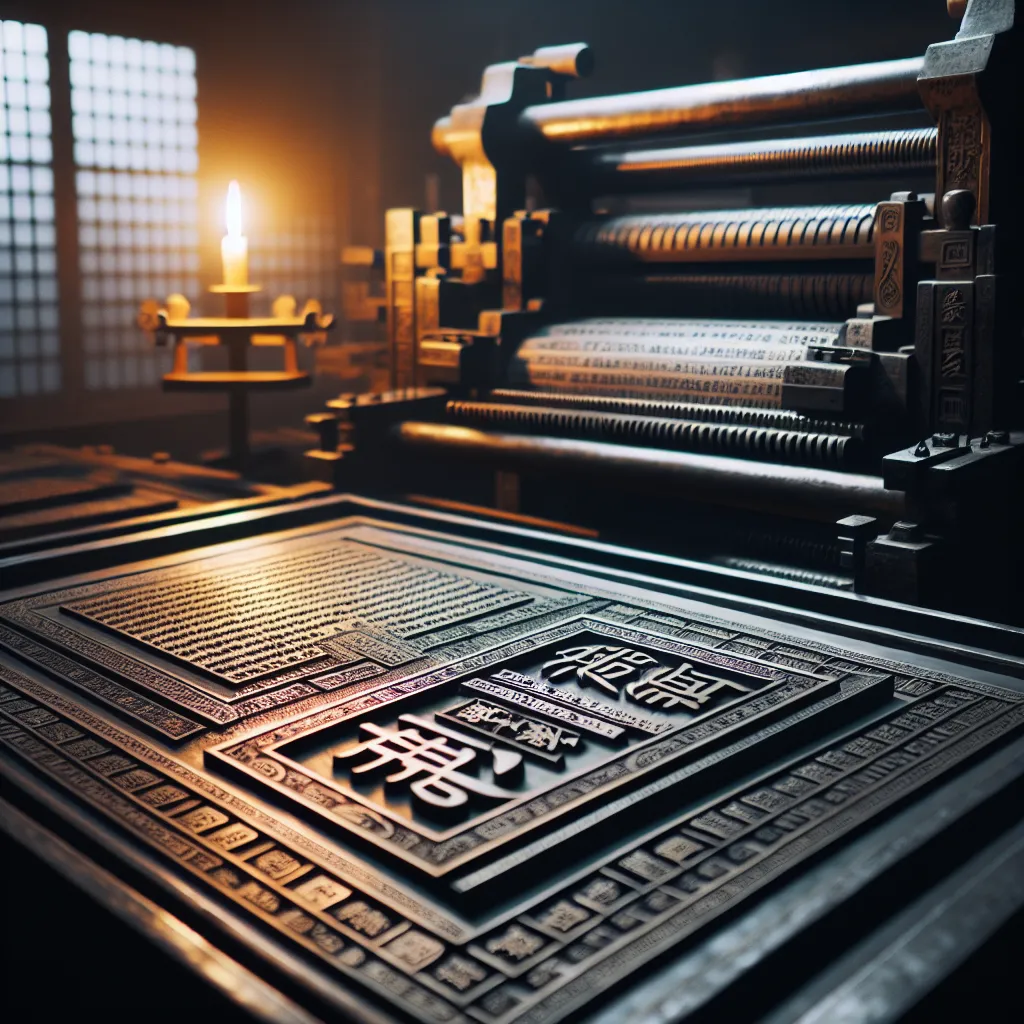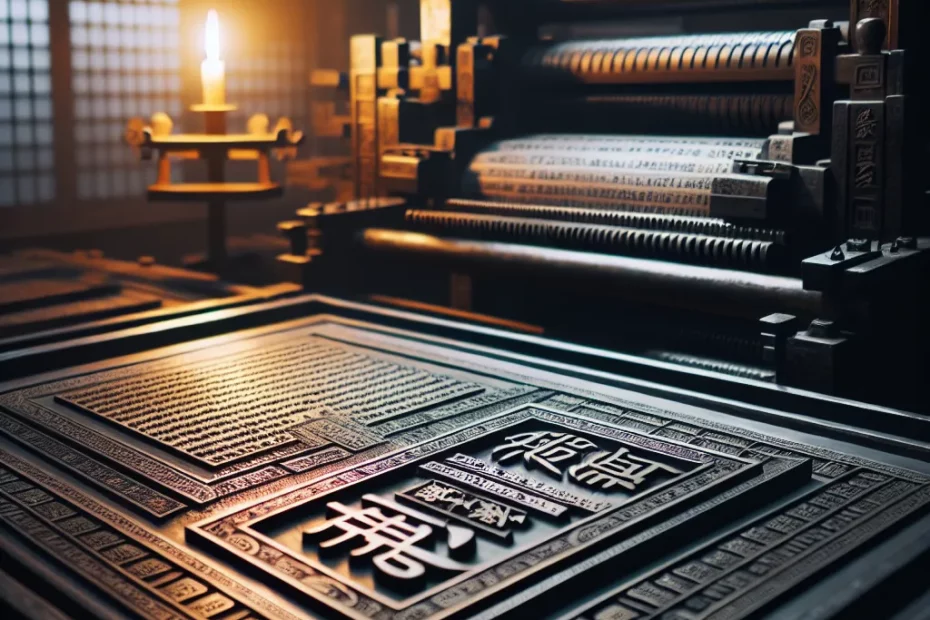Jikji, the world’s oldest metal print book, stands as a testament to Korea’s significant contribution to the history of printing. With its origins shrouded in historical context, the creation of Jikji marked a pivotal moment in technological achievement through metal printing. This legacy continues to influence printing innovation, leaving a lasting impact on the evolution of the printing industry. As we delve into the story of Jikji, we uncover a rich tapestry of history, innovation, and cultural significance that underscores Korea’s role in shaping the world of printing as we know it today.

Origins of Jikji and its Significance in Printing History
In the realm of printing history, Jikji stands as a monumental achievement, revered as the world’s oldest metal print book. Originating in Korea during the Goryeo Dynasty in 1377, Jikji holds a special place in the annals of printing innovation. This ancient text, composed of Buddhist teachings and Zen meditation practices, was meticulously crafted using metal moveable type, a groundbreaking technique that revolutionized the world of printing.
The Creation of Jikji
The creation of Jikji is attributed to the Buddhist monk Baegun, who sought to disseminate Buddhist teachings in a more efficient and widespread manner. By utilizing metal moveable type, Jikji paved the way for the mass production of books, marking a significant advancement in the history of printing.
Jikji’s Significance
Jikji‘s significance extends beyond its status as the oldest metal print book. It serves as a testament to Korea’s rich cultural heritage and its contributions to the development of printing technology. The meticulous craftsmanship and attention to detail evident in Jikji showcase the advanced level of skill and artistry present in Korean printing during the Goryeo Dynasty.
Impact on Printing History
Furthermore, Jikji‘s impact on the history of printing cannot be overstated. It played a pivotal role in influencing the evolution of printing techniques across the globe, laying the foundation for future innovations in the field. The legacy of Jikji lives on as a symbol of ingenuity and creativity in the realm of printing history.
Enduring Legacy
As we reflect on the origins of Jikji and its significance in printing history, we are reminded of the enduring legacy of this ancient text. From its humble beginnings in 14th century Korea to its lasting impact on the world of printing, Jikji continues to inspire and captivate scholars and enthusiasts alike. It stands as a testament to the power of innovation and the timeless beauty of printed words.
Historical Context of Jikji’s Creation
In the early 14th century, during the Goryeo Dynasty in Korea, a remarkable achievement in the history of printing took place with the creation of Jikji, the world’s oldest metal print book. Jikji, meaning “selected teachings,” was compiled by the Buddhist monk Baegun and printed using metal movable type. This groundbreaking innovation predates Gutenberg’s famous printing press by over 70 years, making Jikji a crucial milestone in the history of printing.
The Goryeo Dynasty and Intellectual Exchange
The Goryeo Dynasty, known for its advancements in technology and culture, provided the fertile ground for the creation of Jikji. During this period, Korea was a hub of intellectual exchange, with a strong emphasis on scholarship and knowledge dissemination.
Baegun’s Motivation and Metal Movable Type
Baegun’s motivation for compiling Jikji stemmed from a desire to preserve the teachings of Buddhism and make them more accessible to a wider audience. The use of metal movable type allowed for efficient reproduction of texts, enabling the spread of knowledge beyond the confines of monasteries.
Content and Craftsmanship of Jikji
Jikji consisted of a collection of Zen Buddhist teachings and was printed in two volumes. The meticulous craftsmanship involved in creating the metal type reflects the dedication to preserving and sharing knowledge during that era.
Significance of Jikji
The significance of Jikji lies not only in its technological innovation but also in its role in promoting literacy and education. By making texts more readily available, Jikji contributed to the democratization of knowledge, empowering individuals through access to information.
Global Legacy and UNESCO Recognition
Beyond its impact in Korea, Jikji’s legacy resonates globally as a testament to the ingenuity and creativity of humanity. The recognition of Jikji as a UNESCO Memory of the World highlights its enduring importance in the evolution of printing and its profound influence on the dissemination of ideas.
Reflection on Jikji’s Creation
As we reflect on the historical context of Jikji’s creation, we are reminded of the transformative power of innovation and the enduring legacy of those who strive to expand the boundaries of knowledge. Jikji stands as a testament to Korea’s rich cultural heritage and its invaluable contribution to the history of printing.
Technological Achievement of Metal Printing in Jikji
In the realm of printing history, Jikji stands as a monumental achievement, showcasing Korea’s pioneering contribution to the evolution of printing technology. The significance of Jikji lies not only in its status as the world’s oldest metal print book but also in the innovative techniques it employed, setting a high standard for future printing endeavors.
Metal Printing Revolution
Metal printing, as demonstrated in Jikji, revolutionized the way information was disseminated, marking a pivotal moment in the history of printing. The meticulous craftsmanship required for metal printing elevated the quality and durability of printed materials, ensuring that knowledge could be preserved for generations to come.
Groundbreaking Technique of Jikji
Jikji, printed in 1377 during the Goryeo Dynasty, utilized moveable metal type, a groundbreaking technique that predated Gutenberg’s famous printing press by over 70 years. This early form of metal printing allowed for greater precision and efficiency in the printing process, enabling the rapid production of books and documents.
Technological Prowess of Korean Printers
The intricate details and fine characters produced through metal printing in Jikji exemplify the advanced technological prowess of ancient Korean printers. Each metal type was carefully crafted and arranged to create flawless imprints on paper, showcasing a level of skill and artistry that was unparalleled at the time.
Impact on Knowledge Dissemination
Beyond its technological innovations, Jikji also played a crucial role in the preservation and dissemination of knowledge, contributing to the intellectual advancement of society. The ability to mass-produce books through metal printing democratized access to information, empowering individuals from all walks of life to engage with literature and ideas.
Global Influence of Jikji
Jikji’s legacy extends far beyond its origins in Korea, influencing the development of printing techniques around the world. Its impact on the history of printing cannot be overstated, as it paved the way for future innovations and laid the foundation for the modern printing industry.
Legacy of Innovation
As we marvel at the technological achievements of metal printing in Jikji, we are reminded of the ingenuity and creativity of our predecessors. The legacy of Jikji serves as a testament to the enduring power of human innovation and the profound impact that advancements in printing technology can have on society.
In conclusion, Jikji’s technological achievement in metal printing not only revolutionized the way information was shared but also left an indelible mark on the history of printing. Its legacy continues to inspire and inform our understanding of the past, highlighting the importance of innovation and craftsmanship in the evolution of technology.
Legacy of Jikji and Influences on Printing Innovation
In the realm of printing history, Jikji stands as a monumental figure, symbolizing Korea’s remarkable contribution to the evolution of printing technology. Printed in 1377, Jikji, also known as “Buljo Jikji Simche Yojeol,” is recognized as the world’s oldest existing metal print book. This invaluable work, composed of selected teachings of Zen Buddhism, not only showcases the rich cultural heritage of Korea but also holds significant importance in the context of printing innovation worldwide.
The Legacy of Jikji
The legacy of Jikji extends far beyond its historical significance as the first metal print book. Its impact on printing techniques and innovations is profound and enduring. Jikji played a pivotal role in revolutionizing the way information was disseminated, laying the groundwork for future advancements in the field of printing. The meticulous craftsmanship and attention to detail evident in Jikji set a high standard for printing quality, inspiring generations of printers and publishers to strive for excellence in their craft.
Influence on Printing Innovation
One of the most notable influences of Jikji on printing innovation is its role in the development of movable metal type printing. The use of metal type allowed for greater efficiency and accuracy in the printing process, paving the way for the mass production of books and other printed materials. This revolutionary technique, pioneered by Jikji, marked a significant turning point in the history of printing, leading to the widespread dissemination of knowledge and ideas on a scale never before seen.
Furthermore, Jikji’s emphasis on precision and consistency in printing had a lasting impact on the evolution of printing technology. The principles of craftsmanship and attention to detail embodied in Jikji served as a guiding light for future generations of printers and innovators, shaping the development of new printing techniques and technologies. The legacy of Jikji continues to inspire advancements in the field of printing, reminding us of the enduring power of innovation and creativity in the pursuit of knowledge.
In conclusion, Jikji’s legacy as the world’s oldest metal print book transcends its historical significance, serving as a testament to Korea’s rich cultural heritage and enduring legacy of printing innovation. By pushing the boundaries of printing technology and setting new standards of excellence, Jikji has left an indelible mark on the history of printing, inspiring generations of printers and innovators to push the boundaries of what is possible in the world of printing. Jikji’s influence continues to be felt in the digital age, reminding us of the timeless power of innovation and creativity in shaping the future of printing.
Jikji, the world’s oldest metal print book, stands as a testament to Korea’s significant contribution to the history of printing. Its creation marked a pivotal moment in the evolution of printing technology, showcasing Korea’s early adoption of metal printing techniques. The legacy of Jikji continues to inspire innovation in the field of printing, demonstrating the enduring impact of historical achievements on modern practices. As we reflect on Jikji‘s historical context, technological achievements, and lasting influence, we are reminded of the rich tapestry of human ingenuity that has shaped the world of printing as we know it today.
